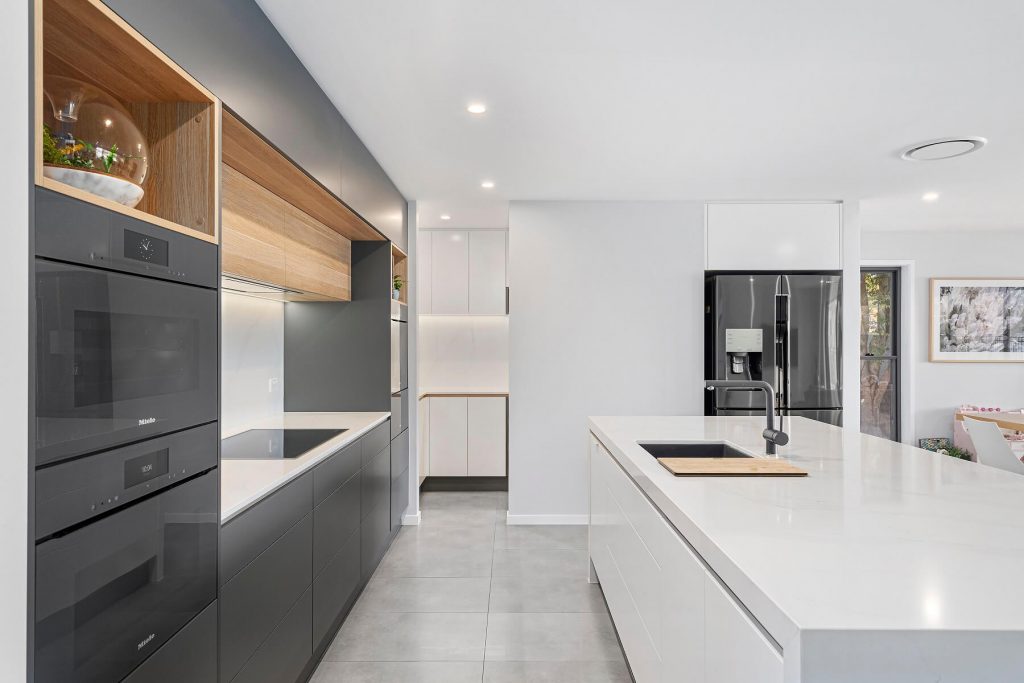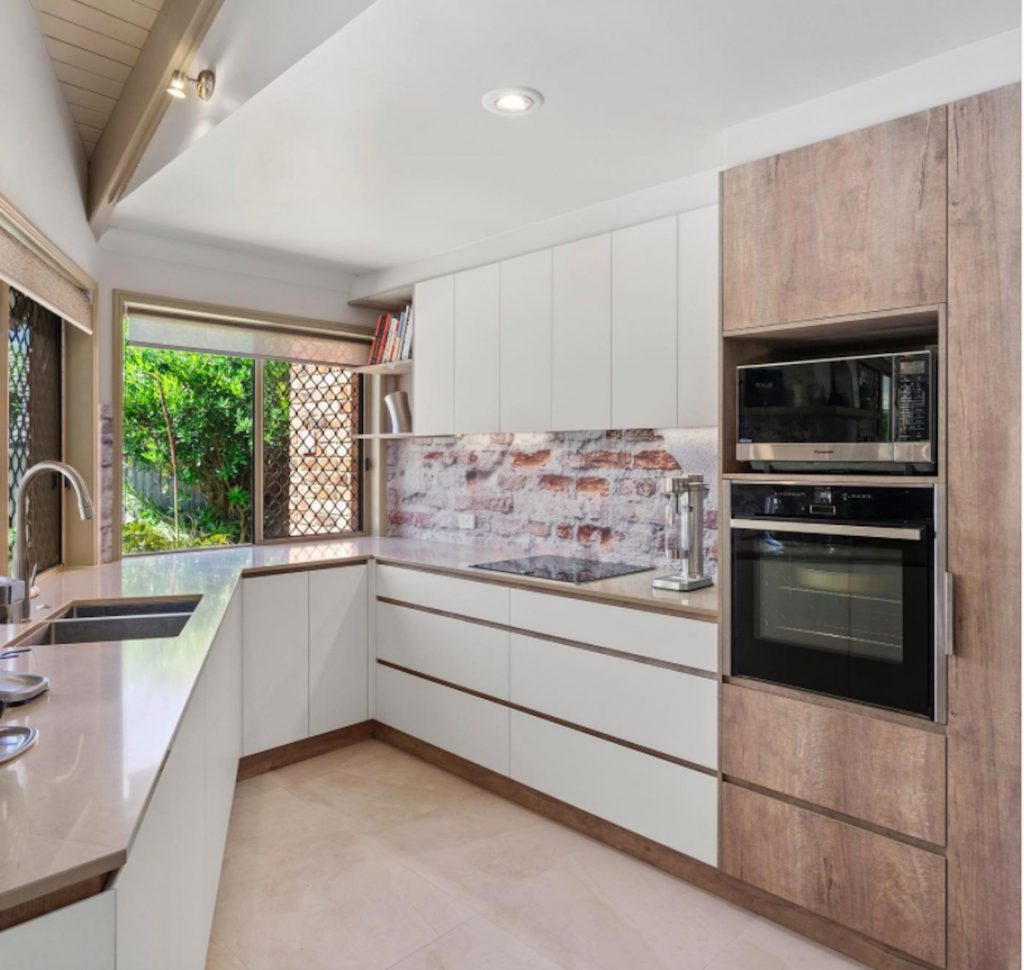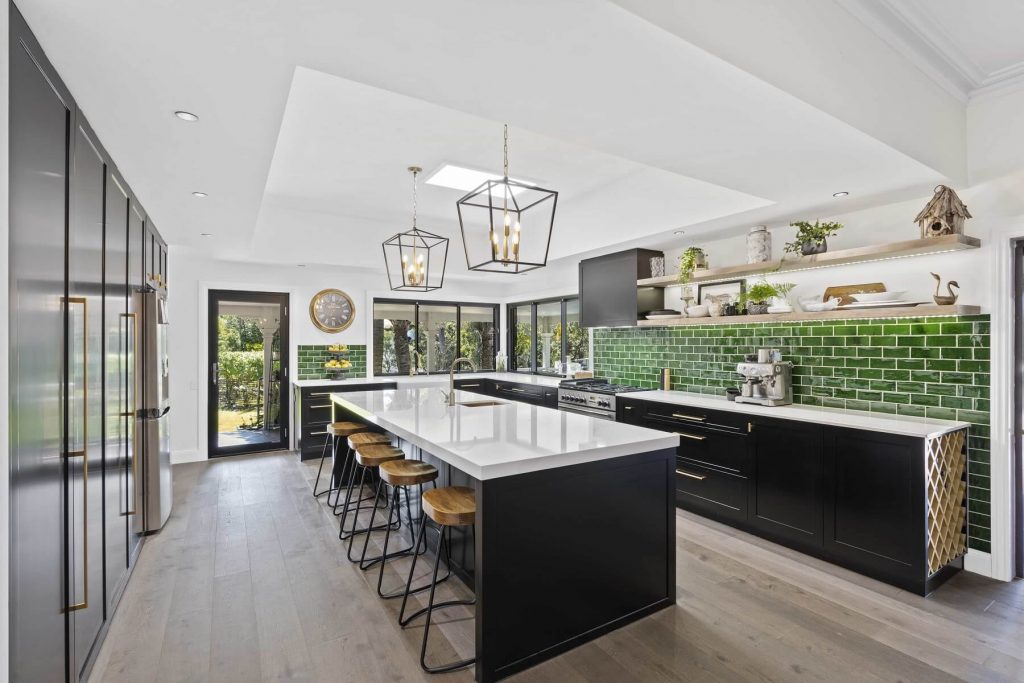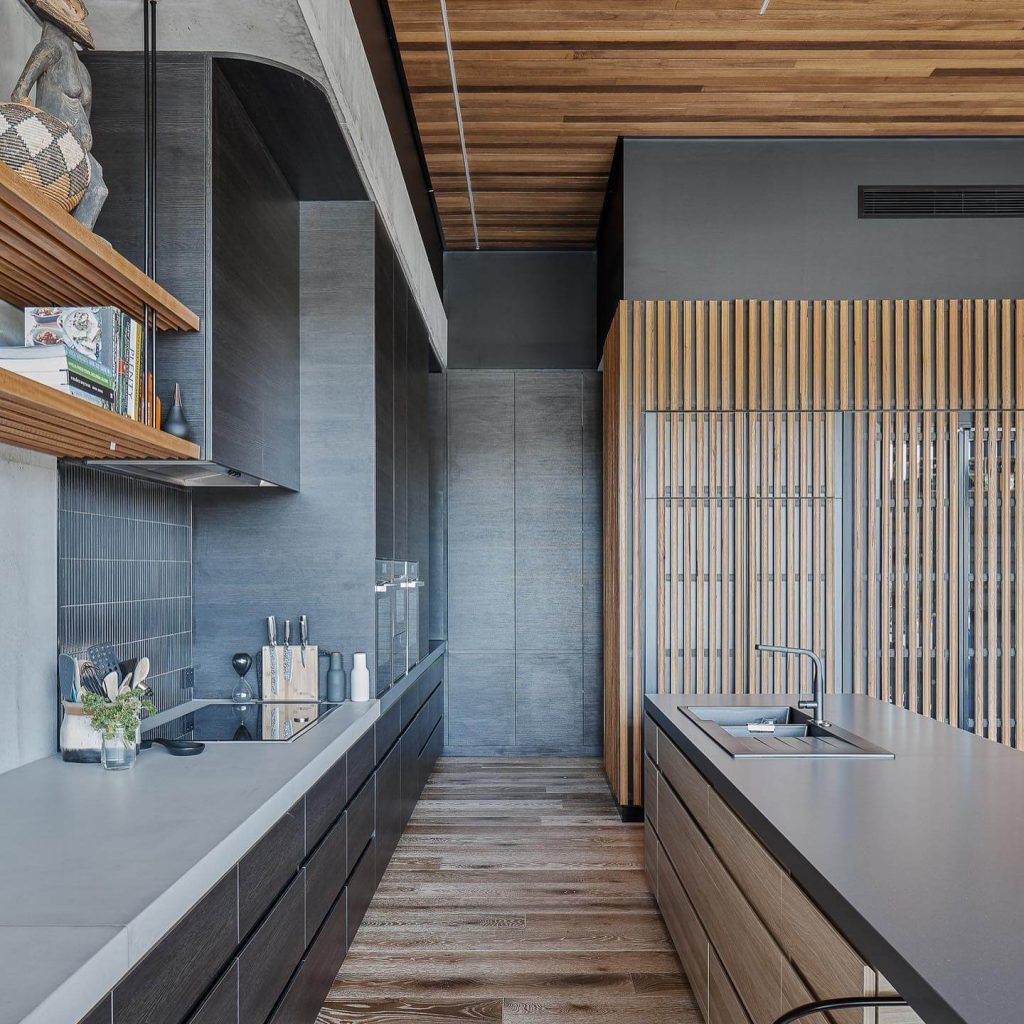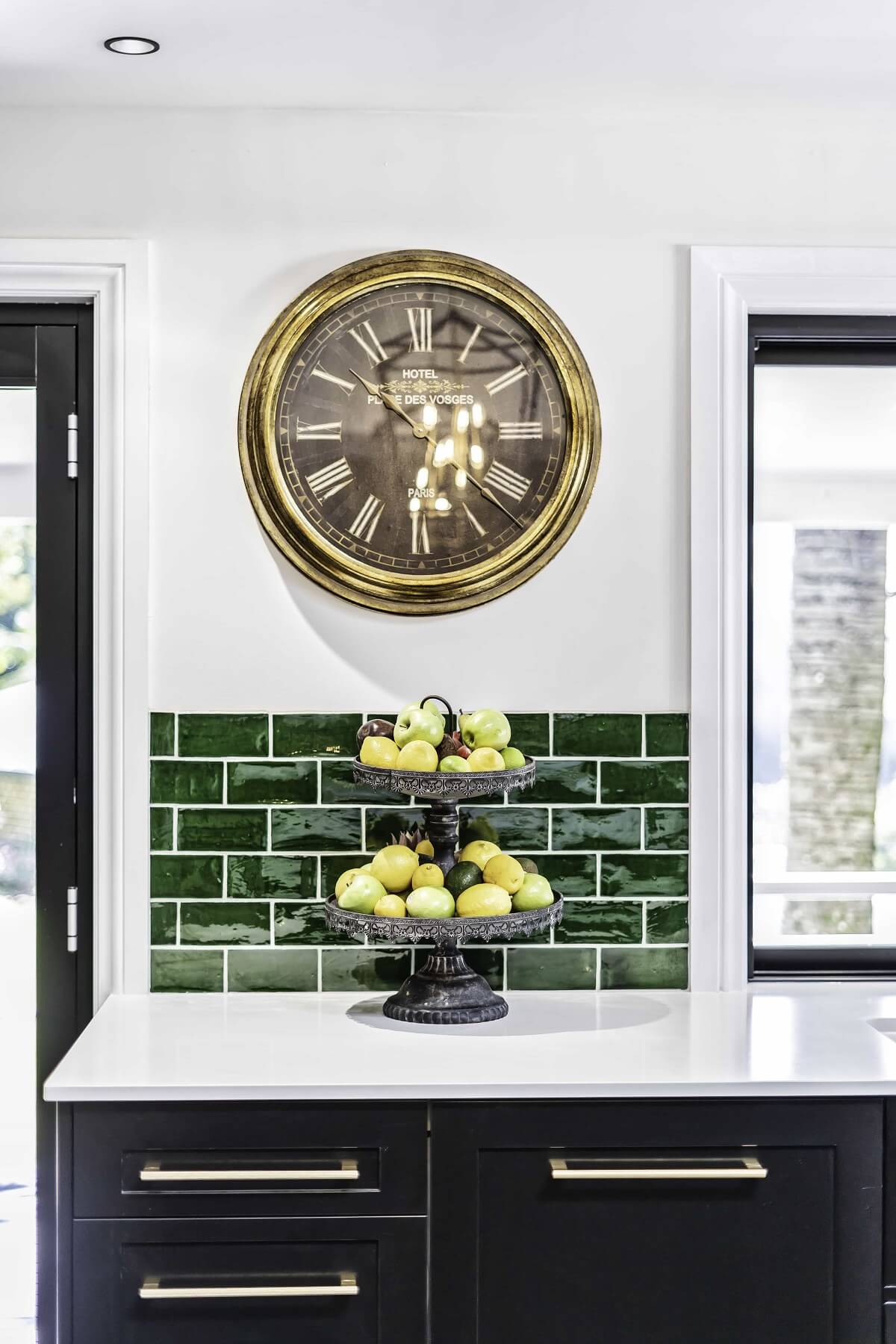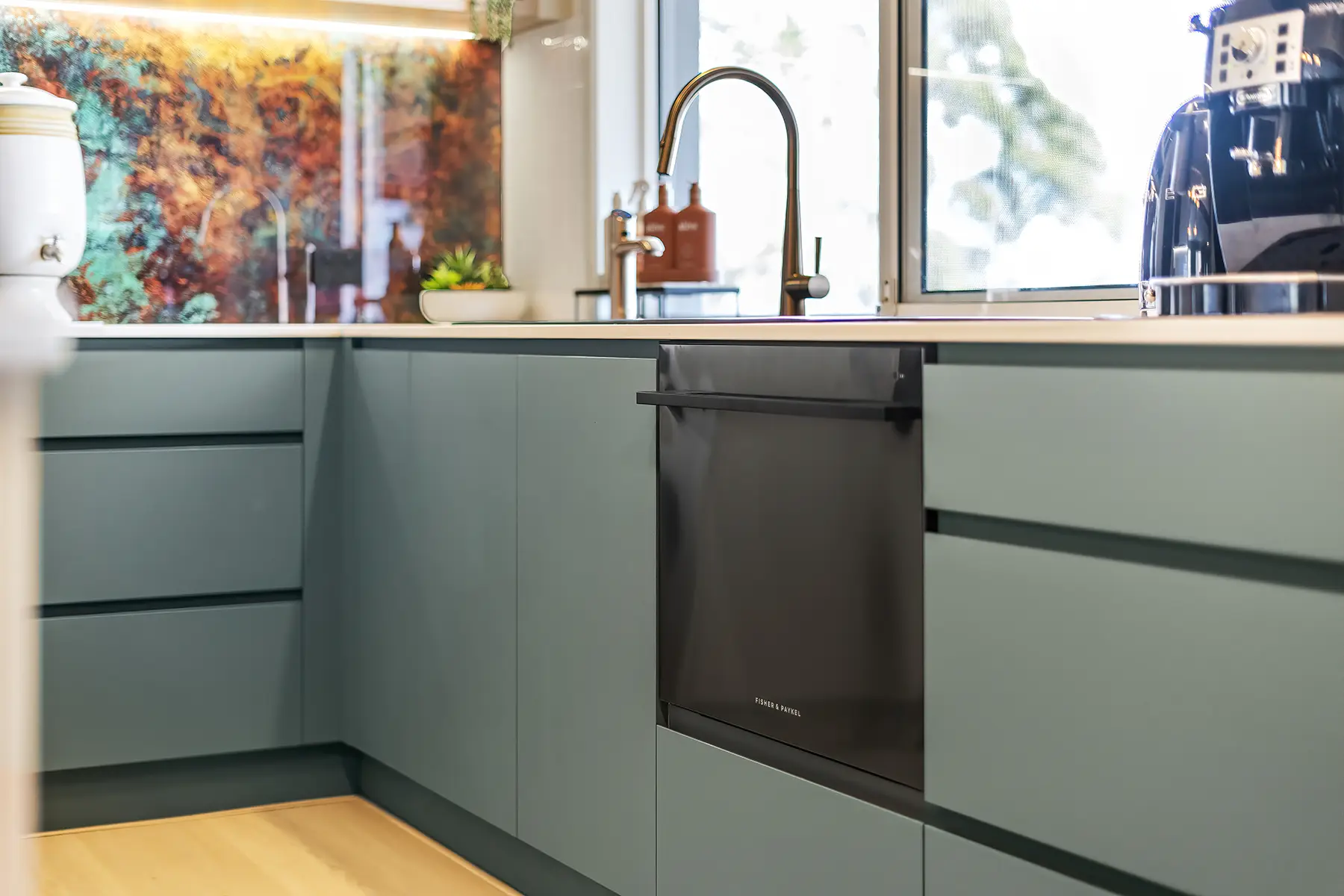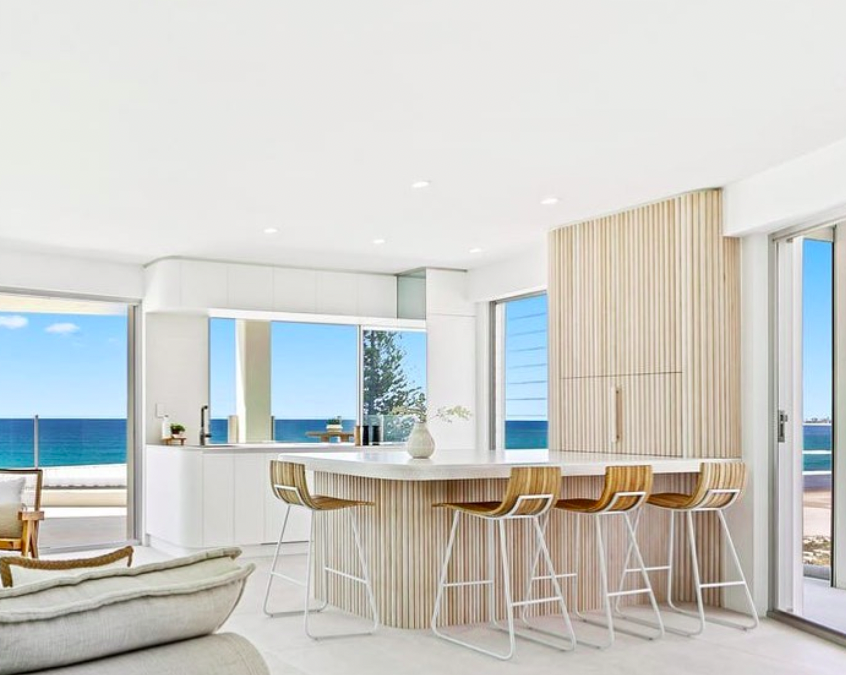Introduction to Colour Psychology in Kitchen Design When embarking on a kitchen renovation or design…
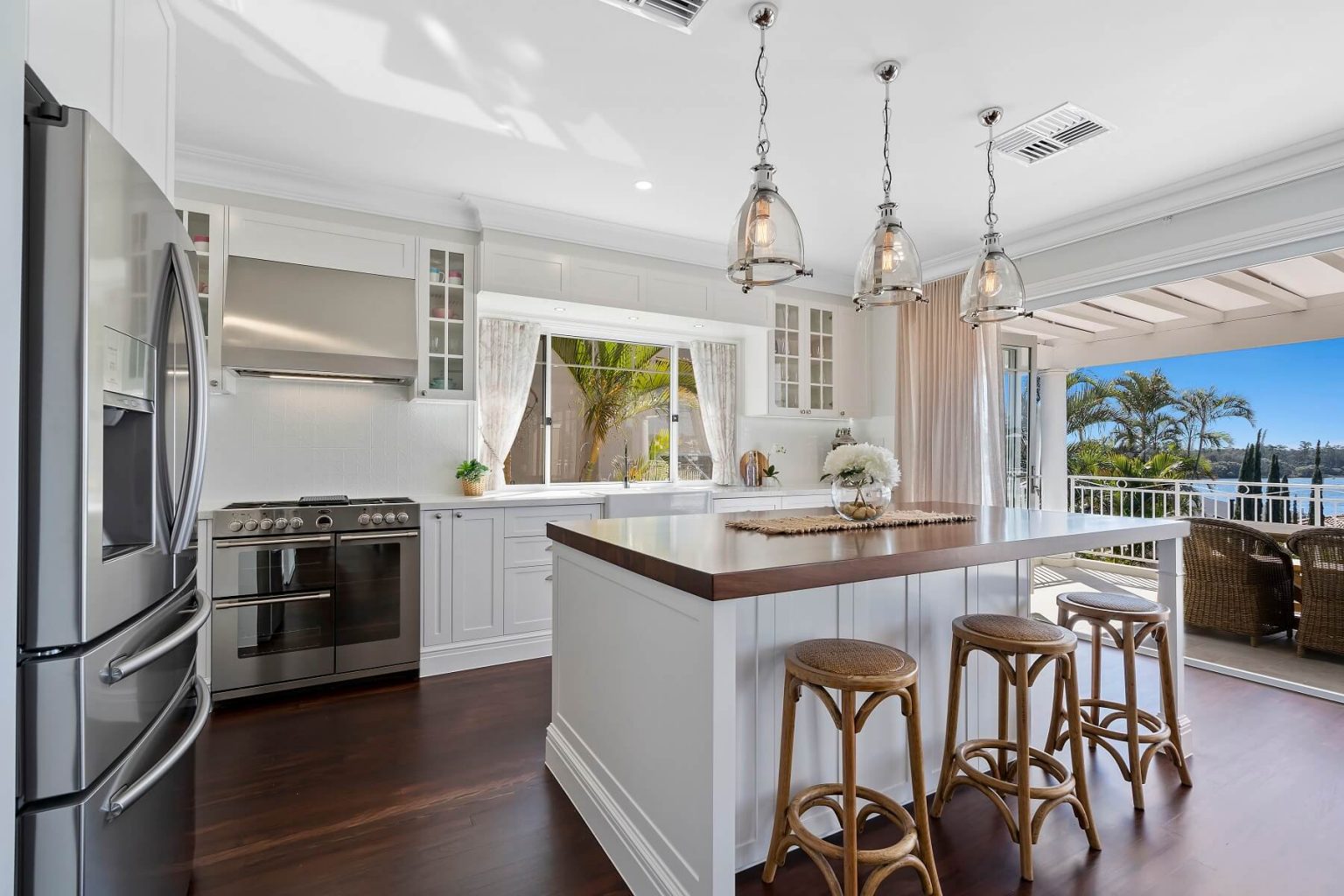
Achieving optimal kitchen lighting and symmetry in your space
The kitchen is a room or area where food is prepared and cooked, a space for entertaining, socialising with family and ultimately the heart of the home—meaning the way we structure and light our kitchen is very important in order to maintain a visually appealing and functional household. For the best lighting arrangement it is ideal to strike a balance between form and function. Additionally, for your lighting plan to work effectively in your individual space the location must be considered (you cannot take a one size fits all approach to kitchen lighting). There are many ways to light your space—you can utilise task, feature, and mood lighting using downlights and pendants. Whether you are planning a kitchen renovation or researching for an up-and-coming project, consider this advice prior to embarking on your kitchen refresh to ensure the ultimate outcome for your home.
Why do we love symmetry?
The history of symmetry
Symmetrical design cues affect our subconscious, even when they are almost too subtle to be noticed in interior design. Our natural instinct draws us towards balance and symmetry, as they create a feel of harmony and stability in a space. In fact, as far back as ancient Roman times, Vitruvius, in addition to his city grids, described the perfect home as having two identical wings divided by a garden. This look was then implemented in Renaissance palaces with most of them featuring same size wings revolving around a circle or rectangle. In time, this same symmetrical look became familiar in public buildings and upscale private homes, and now in everyday interior design in the modern world.
Simple ways to achieve symmetry
Through well balanced lighting schemes: use evenly placed fixtures or a large central fixture with smaller lighting options strategically placed around the focal piece. You can balance lighting from windows with brightening features on the opposing side (for example a wall mirror).
Symmetrical cabinetry layout: the layout of cabinets on the opposite side of the room, or on the opposite side of a focal point such as an oven will keep your kitchen more aesthetically pleasing to the eye and improve the symmetrical appeal of your space.
Seating: opt for even numbers where possible and when you’ve got the option for seating on two sides, at a table—ensure the number of chairs on each side match. By incorporating bench or stool seating in a balanced manner (at your kitchen bench or island)—can also help to keep your space appearing symmetrical and aesthetically pleasing.
Accessories: in the areas where your kitchen is lacking symmetry, consider using accessories to elevate your design and increase the balance in your space. Artwork, or hanging pots and pans, are just a few options you might use to create a more balanced look.
Work with your ceilings: If you live in a home with high ceilings, you may have thought about how to fill the space above your cabinetry and appliances effectively, in order to create more storage or to simply balance out your space. Consider suspending some feature pendant lights which will draw the eye up into this underutilised ceiling space. Pendant lighting isn’t just for high ceilings, they are actually effective at distorting the proportions of your kitchen—giving the illusion of a larger space in even the most compact kitchen designs. In this case, opt for pendant lighting with a more reflective surface such as a metallic shade, as this will enable daylight and artificial light to bounce around your space in a visually appealing way.
Keep in mind it’s important that the pendants you choose are evenly spaced to promote a sense of balance and symmetry in your home—this will act as the focal point in the upper part of the kitchen and is important in all kitchen designs but especially in a home that embodies an open plan living layout. In addition to pendant lighting, try using feature lights to illuminate certain aspects of your kitchen such as the kitchen island, any under-utilised nooks, or to effectively illuminate your favourite wall art. Always ensure with all lighting options that you allow for adequate clearance between taps, seating and other moving objects in the kitchen to keep the functionality of your space a priority.
Curvy
Most of us will have rectangular and linear kitchens, parallel cabinetry and 90-degree edges. This can be satisfying in most cases—however, if you’re looking to ease the crisp aesthetic of your kitchen, then ditch the angular shapes and opt for some curves. This trend has gained immense popularity on social media with many influencers embracing the curved home design trend. The implementation of a curved pendant light accompanied with curved drawer pulls will detract from the sharp lines of your worktops and will soften the overall aesthetic of your kitchen. Often with the curve trend you will need custom designed cabinetry which you can match your pendant lights too in order to create a cohesive and thought-out kitchen design.
Try adding some colour
Bright colours and brave contrasting schemes have been a popular design trend which became prevalent early on in 2022. Opting for a coloured light fixture will not only bring focus to a specific location—but will also provide an accent of vibrancy that will elevate the natural schemes of your home. Pendant lighting is highly versatile as it comes in a huge array of shapes and styles from big, bold and metallic—to dainty and subtle in understated tones. Ensure you have your lighting scheme professionally installed to achieve your desired finish—after all this is a highly important design element of your kitchen and a home job is very obvious even to untrained eyes.
Here at BJF Joinery we are able to completely customise your kitchen light design theme based on your individual needs. This means you can get as intricate and extensive as you like with your lighting plan and we can execute it in line with exactly what you want.
Or keep it neutral
If vibrant pops of colour are not what you desire, a neutral finished pendant light in white, beige, chrome, black, or silver in an all white or natural toned kitchen will have an equally impressive effect in your space.
Mixing materials
Mixing a range of differing materials, colours and textures in kitchen design has been very popular with our South East Queensland clients who value bringing the outside in and creating a highly dynamic space. Don’t be afraid to try something out of the ordinary, experiment with raw finishes and create a tactile experience for you and your guests. Bringing texture into your space isn’t just for visual effect, it can alter the way you experience the kitchen and the way you interact with elements in a tangible sense.
A prominent trend this year has been the implementation of marble, dark mid-century style cabinetry, muted greens and pinks—a balance of light and dark, contrasting textures, hints of
muted colour and slight tonal differences. We would recommend choosing a raw finish, preferably polished to complement the mix of colours and support the distribution of light around the room. Copper acts as a subtle accent and works well with neutral greens and earth tones which makes it perfect for adding a warm tone into your fresh kitchen.There are many metal finishes such as nickel, brass and burnished finished kitchen accessories and material that can be utilised in your space to create a rustic, industrial or farmhouse feel.
After learning more on the many lighting options that can be implemented into your kitchen renovation plans, we hope that you are better equipped and inspired to begin your kitchen renovation plans asap with the help of our qualified professionals!
